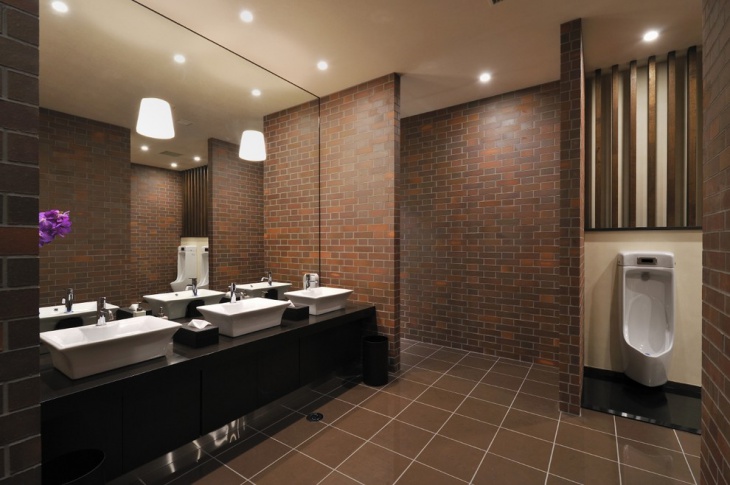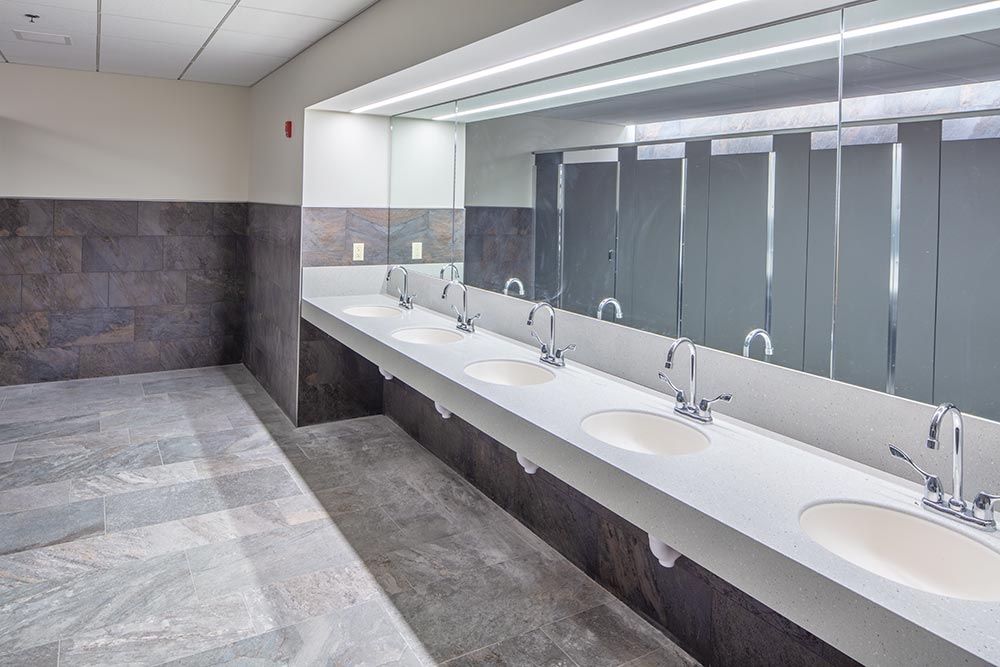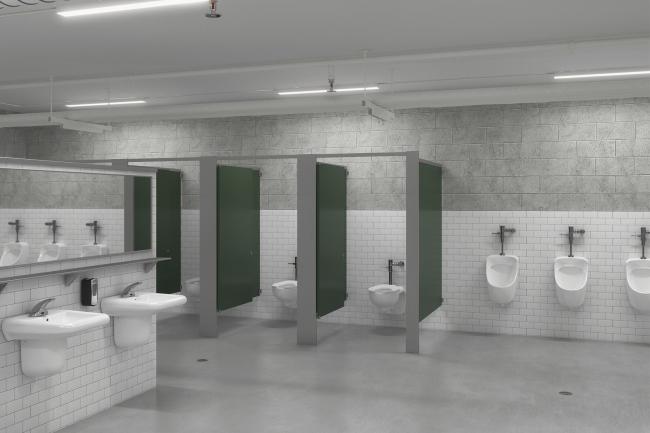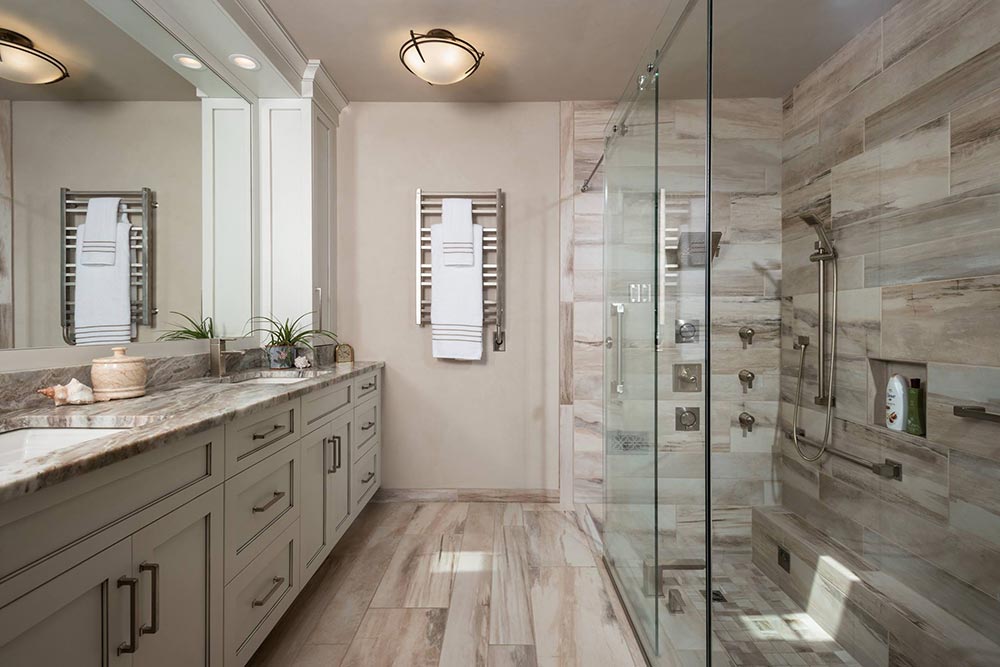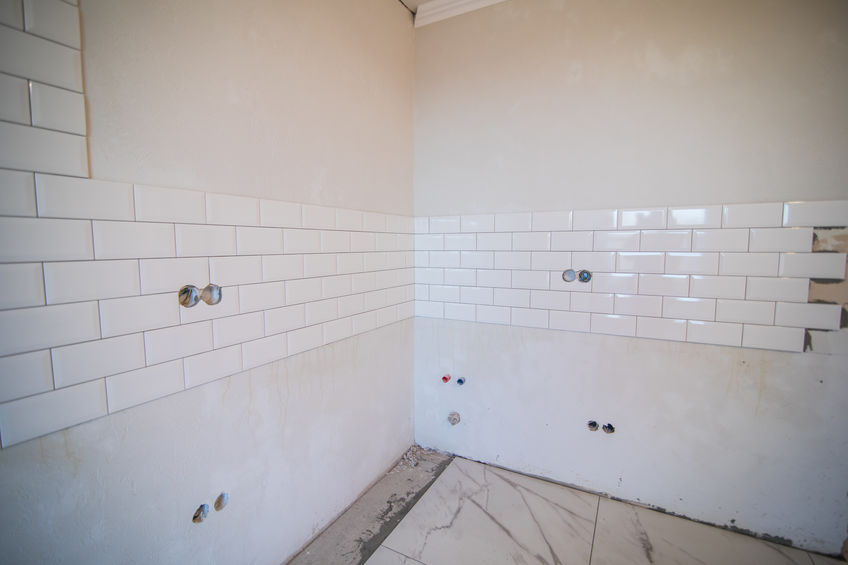When designing a commercial bathroom, tile selection plays a critical role in setting the overall aesthetic and functionality of the space. Tiles are not just a decorative feature but also provide durability and ease of maintenance, which are essential in high-traffic areas like commercial restrooms. As I’ve learned through many design projects, the right choice of tile can create a visually appealing and practical space that withstands daily wear and tear, while still ensuring that cleaning and maintenance are straightforward. Tile choice is about more than just appearance; it encompasses texture, size, layout, and material, all of which need to be carefully considered when crafting a well-functioning bathroom.
First, one of the most important things to think about when choosing tiles for a commercial bathroom is durability. Commercial spaces experience a much higher volume of traffic than residential areas, so the tiles need to be tough and long-lasting. Porcelain tiles are an excellent choice because they are highly durable, water-resistant, and scratch-resistant. This makes them ideal for a bathroom setting where moisture is prevalent, and frequent cleaning is required. Porcelain is also available in various finishes, including matte and polished, allowing you to achieve different looks based on your design needs.

Slip resistance is another crucial factor to consider, especially in wet areas like bathrooms. To avoid accidents, especially in spaces where there may be elderly individuals, children, or customers with mobility issues, choosing tiles with slip-resistant properties is non-negotiable. Look for tiles with a textured finish or those specifically designed with a higher slip-resistance rating. Matte or textured porcelain tiles often provide better grip compared to polished finishes, making them a safe yet stylish option.
Another element of tile design is size. In commercial bathrooms, large-format tiles have gained popularity because they reduce the number of grout lines, which in turn simplifies cleaning and maintenance. Fewer grout lines mean less dirt and grime buildup, making the bathroom more hygienic and easier to maintain. Larger tiles can also create the illusion of a more spacious bathroom, which can be beneficial in smaller commercial spaces where a feeling of openness is desired.
Color also plays a significant role in the tile design of a commercial bathroom. Neutral tones such as whites, grays, and beiges are commonly used because they create a clean, fresh look that is both timeless and versatile. Lighter colors can also reflect more light, making the bathroom appear brighter and more inviting. However, it’s important to consider the type of business when selecting colors. A modern office space might benefit from minimalist tones, while a trendy restaurant or boutique hotel might opt for bolder, more vibrant hues to create a unique, eye-catching design. Whatever the choice, the key is ensuring that the tile color complements the overall brand identity of the business.
Patterns and textures add another layer of complexity to commercial bathroom tile design. Subway tiles, for instance, offer a classic, clean look and can be arranged in different patterns, such as herringbone or brick-lay, to create visual interest without being overwhelming. If you want to go a step further, consider using geometric patterns or even mixing tiles of different shapes and sizes. Textured tiles, whether it’s a subtle ripple or a more pronounced 3D design, can also add depth to the space, transforming a simple bathroom into a sophisticated, contemporary one. Just be cautious not to overdo it; too many patterns or textures can make a bathroom feel busy or cramped.
Grout selection is another detail that shouldn’t be overlooked. While grout is often seen as an afterthought, it can significantly impact the overall appearance and longevity of the tile installation. Darker grout colors are practical in commercial bathrooms as they tend to hide dirt and stains better than lighter shades. This is particularly important in high-traffic restrooms where cleanliness is crucial but may not always be easy to maintain. Additionally, using grout sealant can help protect the grout from moisture, ensuring it stays cleaner and lasts longer.
For commercial spaces, easy maintenance is key. Tiles that are easy to clean and maintain can help minimize downtime for cleaning and repairs, which is especially important in businesses that operate long hours. Glossy finishes might seem appealing due to their reflective quality, but they tend to show water spots, smudges, and fingerprints more readily than matte finishes. Therefore, choosing tiles that hide dirt and are easy to wipe down can save significant time and effort in maintenance.
Another key consideration is sustainability. More businesses are focusing on eco-friendly designs, and tiles made from recycled materials or those with a low environmental impact are becoming increasingly popular. Many manufacturers offer tiles made from recycled glass or ceramics, which not only look beautiful but also align with the growing trend of sustainable design. If a business wants to showcase its commitment to the environment, eco-friendly tiles can serve as both a practical solution and a marketing point.
In terms of layout, the arrangement of the tiles can dramatically affect the perception of the space. Vertical tile arrangements can make walls appear taller, giving the bathroom a more spacious feel. Horizontal layouts, on the other hand, can make narrow bathrooms seem wider. Playing with different tile layouts can help customize the look and feel of the restroom, making it more functional while still aesthetically pleasing.
Another trend in commercial bathroom tile design is the use of accent tiles. These can be used sparingly to create focal points within the bathroom, such as around the mirror or in the shower area. Accent tiles add color, texture, or pattern to break up the monotony of plain tiles, creating an eye-catching feature without overwhelming the space. This is especially useful in high-end commercial settings where luxury and attention to detail are important.
Lighting is also something to consider when designing with tiles. Tiles that reflect light, such as those with a glossy finish, can enhance the brightness of the bathroom, making it feel larger and more inviting. However, in spaces where a softer, more intimate atmosphere is desired, matte tiles that absorb light might be a better choice. The lighting scheme should complement the tile choice, ensuring that the overall effect is cohesive and enhances the customer experience.
For commercial bathrooms in upscale or luxury environments, natural stone tiles such as marble or slate can add an element of elegance and sophistication. While natural stone requires more maintenance than porcelain or ceramic, its unique veining and texture can make a lasting impression. However, it’s crucial to apply the proper sealants and ensure that the tiles are well-maintained to prevent stains and damage, especially in areas exposed to moisture.
The cost is, of course, a practical consideration when selecting tiles for a commercial bathroom. While it can be tempting to opt for cheaper options, remember that high-traffic areas require durable, high-quality materials to avoid frequent repairs or replacements. Investing in good-quality tiles from the outset can save money in the long run by reducing the need for ongoing maintenance and extending the life of the installation.
Beyond aesthetics, another functional aspect to consider is acoustics. Hard surfaces like tiles can amplify noise, which may not be desirable in a bathroom, especially in quieter commercial settings like offices or luxury hotels. In such cases, using tiles with textured surfaces or installing sound-absorbing materials like acoustic panels alongside the tiles can help mitigate the noise and create a more comfortable environment.
Finally, accessibility should always be a priority in commercial bathroom design. Choose tiles that not only enhance the design but also cater to people with varying needs. For example, incorporating slip-resistant tiles in wet areas, using contrasting colors for better visibility, and ensuring that the layout is compliant with ADA guidelines all contribute to making the bathroom accessible to everyone.
Common Mistakes to Avoid
When designing a commercial bathroom, several common mistakes can detract from both the functionality and aesthetic appeal of the space. One frequent error is choosing the wrong tile material. For example, natural stone, while beautiful, is often porous and requires more maintenance. This can be problematic in commercial environments where ease of cleaning and durability are essential. If natural stone is chosen, proper sealing and ongoing maintenance are a must to avoid damage.
Another mistake is using tiles that are too slippery. While glossy finishes may look attractive, they can become dangerous in a wet bathroom environment, especially in high-traffic areas. It’s important to prioritize safety by choosing slip-resistant tiles, particularly in the shower area or around sinks.
Overlooking grout color and quality can also lead to long-term issues. Light grout can stain easily, making the bathroom look dirty, even when it’s freshly cleaned. Darker grout, or grout treated with a sealant, will last longer and require less maintenance in a commercial setting.
Many designers fail to consider how tile size can impact the space. Using very small tiles with lots of grout lines can make a bathroom feel busy and difficult to clean. On the other hand, overly large tiles can feel out of proportion in smaller bathrooms. Finding the right balance is key.
Ignoring brand identity is another pitfall. The tile design should reflect the brand’s image. A luxurious spa might want natural stone tiles, while a modern tech company might prefer sleek, minimalist designs with large-format tiles. The design should align with the overall aesthetic of the business to create a cohesive experience for customers or clients.
Finally, not considering future maintenance needs can lead to problems down the line. Choosing high-maintenance tiles, such as those that require frequent resealing or are prone to scratching, can increase long-term costs and hassle. Commercial bathrooms should be designed with durability and ease of maintenance in mind.
What is the best tile material for commercial bathrooms?
Porcelain tiles are the most popular choice for commercial bathrooms due to their durability, water resistance, and ease of maintenance. They are available in a variety of styles and finishes, making them versatile for different design needs. Porcelain is particularly suited to high-traffic areas because it withstands wear and tear without requiring much upkeep. For luxury settings, natural stone can be an option, but it requires more care and maintenance.
How do I choose slip-resistant tiles for a commercial bathroom?
Slip resistance is crucial in commercial bathrooms, especially in wet areas. Look for tiles that are labeled as slip-resistant or have a high slip-resistance rating, often indicated by an R-value. Textured or matte finishes generally provide better traction than glossy tiles. It’s also a good idea to test the tiles in wet conditions before making a final decision, especially in spaces like showers or near sinks.
How can I make a commercial bathroom look bigger with tile design?
To make a small commercial bathroom look larger, use large-format tiles to minimize grout lines and create a seamless look. Lighter colors, such as whites or light grays, can reflect more light and make the space feel more open. Additionally, arranging tiles in a vertical pattern can make walls appear taller, while horizontal patterns can create the illusion of a wider room.
What kind of maintenance do commercial bathroom tiles require?
The maintenance of commercial bathroom tiles depends on the material. Porcelain and ceramic tiles are low-maintenance and require regular cleaning with mild detergents. Grout lines should be sealed to prevent staining. Natural stone tiles, while beautiful, need more care, including sealing and avoiding harsh cleaners that can damage the stone.
How do I incorporate brand identity into tile design?
The design of the tiles should reflect the overall branding of the business. For example, a luxury hotel might opt for marble or slate tiles to create an upscale ambiance, while a trendy café might choose colorful geometric tiles to create a fun, modern vibe. Consider the color scheme, patterns, and textures that align with the brand image and create a cohesive experience for customers.
What should I consider when choosing grout for a commercial bathroom?
Grout is an often overlooked but important part of tile design. In commercial bathrooms, darker grout colors are recommended because they hide dirt and stains better than lighter shades. Additionally, applying a grout sealant can protect the grout from moisture and grime, extending its lifespan and making it easier to clean.
Commercial Bathroom Tile installation
Related articles:
- Bathroom Tile Projects
- Grout Sealer For Bathroom Tile
- Bathroom Tile Designs Photo Gallery
- Pictures Of Bathroom Tile Showers
- Bathroom Tile Patterns Floors
- Bathroom Tile And Vanity Ideas
- Small Bathroom Tile Layout
- How To Cover Ugly Bathroom Tile In A Rental
- Bathroom Tile Around Window
- Can Bathroom Tile Be Reglazed


